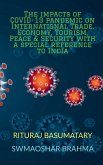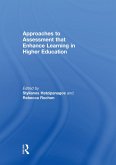Although the number of students enrolled in higher education, the number of institutions, and the resulting expenditure on higher education have all increased significantly, the higher education system still serves a small 6% of its population. In five chapters the study aims at an appraisal of Indian higher education system in comparison with those of the United States of America (USA) and the United Kingdom (UK). Both USA and UK are highly developed economies and comprehensive study will help to bring-out the areas of improvement for higher education system in India. An extensive review of literature has been carried out in chapter two for ascertaining the factors influencing the study and to provide a framework for evaluating the Higher Education Institutions (HEI). The prime factors leveraging higher education system are - learner's demand, efficacy of higher education system and the determinants of selecting international institutions for higher education. Chapter three includes research instrument formulated after extensive literature review by incorporating different variables and scales used in earlier studies. This instrument is validated using factorial validity and reliability measures. Purposive sampling in chapter four studies data from a sample of 1150 students in higher education from three countries India, U.S.A and U.K. Hypotheses testing is done and data analysis has been performed with techniques like Structural Equation Modelling, Regression, ANOVA and t-tests. Results showed that the selection of HEI's for international education differs based on gender and employment levels; except educational qualification. Likewise, the determinants of HEI's efficacy and demand for higher education significantly differ on the basis of gender and employment. Regression analysis shows that demand for higher education is significantly related to selection of HEI's and HEI's efficacy. The differences in parameters of HEI evaluation based on the countries of the student's origin is assessed. In conclusion, it is found that selection of HEI's for international education varies among the students hailing from India, the UK and the USA. Detailed findings and inferences have been discussed. This research has contributed significantly towards assessing the parameters of evaluating higher education institutions with special reference to India, UK and USA.








